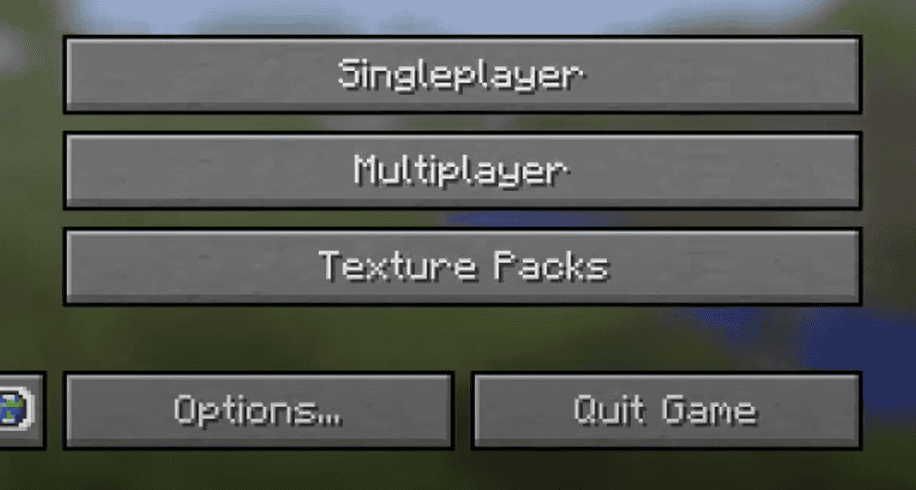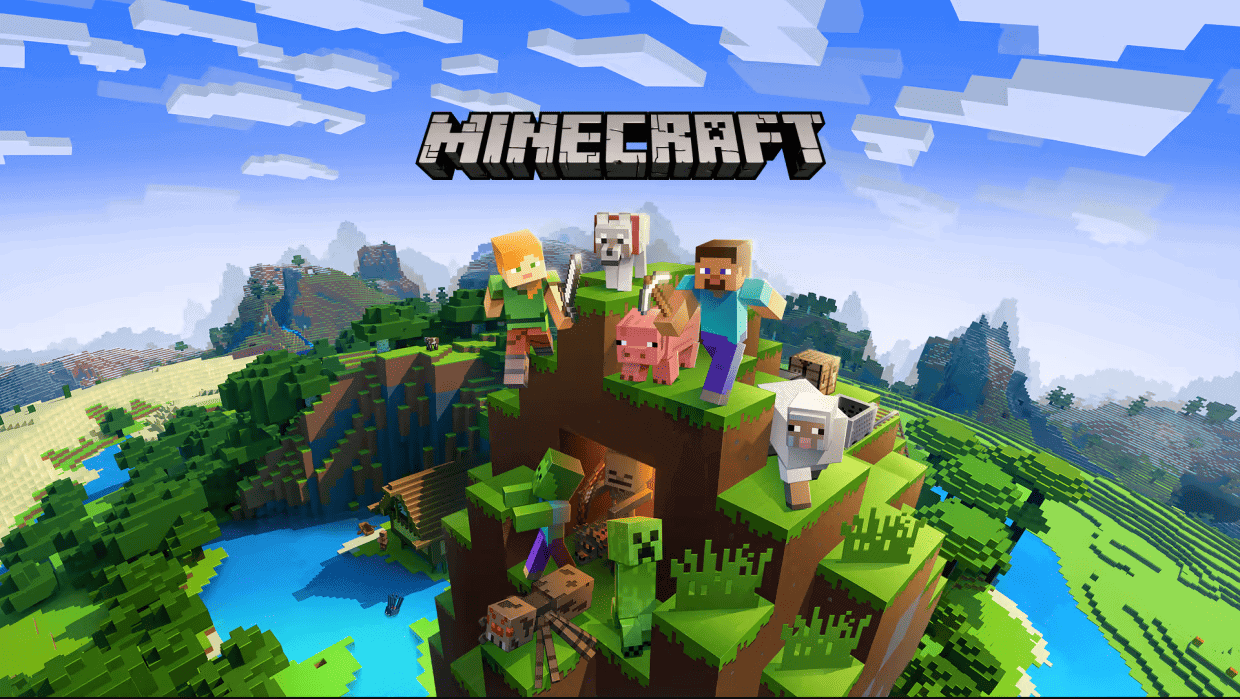Playing Minecraft with friends on a local network should be simple, but many players face frustrating connection issues. When Minecraft LAN isn’t working, the most common causes are computers not being on the same network, firewall restrictions blocking the connection, or version mismatches between players. These problems can prevent worlds from appearing in the multiplayer menu, leaving players unable to join each other’s games.
The good news is that most LAN connection problems can be fixed with a few straightforward steps. Making sure all computers are connected to the same home network is the first essential check. Players should also verify they’re using compatible Minecraft versions – remember that Java Edition cannot connect with Bedrock Edition, regardless of being on the same network.

1. Make Sure You’re On the Same Network
It sounds simple, but it’s the number one cause of LAN issues in Minecraft. All players must be connected to the exact same Wi-Fi or Ethernet network. Double-check that each device is connected to the correct router and not, for example, a mobile hotspot or guest network that isolates devices from each other.
Also, verify that your router doesn’t have client isolation turned on. This setting prevents devices on the same network from communicating with each other — a direct blocker for LAN play.
2. Check the Firewall Settings
Your computer’s firewall can silently block Minecraft’s connection to other players. On Windows, open the Windows Security panel and allow Minecraft (and Java) through the firewall for both public and private networks. On Mac, head to System Settings > Network > Firewall and ensure it’s not preventing local traffic.
It also helps to temporarily disable third-party antivirus software to see if they’re the culprit. If it works with them disabled, create an exception rule specifically for Minecraft or the Java application it uses.
3. Enable Network Discovery
LAN games rely on the ability to discover other devices. If you’re using Windows, go to your Network and Sharing Center and make sure that network discovery is turned on. You’ll also want to allow file and printer sharing, as this setting is tied to how LAN games communicate.
For macOS users, ensure your Mac is set to be discoverable under AirDrop or Sharing settings. Both systems need to “see” each other on the network for Minecraft to detect an available LAN game.
4. Match Game Versions and Mods
All players must be running the same Minecraft version — whether that’s a release version like 1.20.4 or a snapshot. A mismatch will prevent the game from showing up in the LAN browser.
If you’re using mods or Forge, everyone needs the same version of Forge and the exact same mods installed. Even a single extra or outdated mod can block LAN connection attempts. To be safe, copy the entire .minecraft/mods folder and share it with all other players.
5. Use Direct Connection
If Minecraft doesn’t automatically detect the LAN game, try using Direct Connect. On the host computer, open the command prompt or terminal and type:
ipconfig (Windows) or ifconfig (Mac/Linux)
Look for the local IP address (often something like 192.168.x.x). Have the other player click “Multiplayer” > “Direct Connect” and enter the host’s IP followed by the port number shown in the game chat when the LAN world is started. For example:
192.168.1.100:54321
This can bypass detection issues entirely.
6. Launch Minecraft With Admin Rights
Especially on Windows, sometimes launching Minecraft or the game launcher as an administrator helps. Right-click the launcher icon and choose “Run as administrator.” This grants Minecraft the necessary permissions to open ports and communicate over the local network.
7. Disable VPNs and Check for Network Filters
If you or another player are using a VPN, it may reroute traffic in a way that breaks LAN connectivity. Disable VPNs or configure them to allow local traffic. Also, make sure your router or parental control software isn’t blocking port ranges used by Minecraft — specifically UDP port 19132 and TCP port 25565.
8. Restart Everything
If nothing else has worked, do a complete restart:
- Exit Minecraft on all devices
- Restart the router
- Reboot each computer or device
- Relaunch Minecraft and try again
A fresh connection and reboot can sometimes resolve hidden background conflicts with Java, firewalls, or IP assignments.
9. Use an Alternative Hosting Method
If LAN just refuses to work, consider setting up a temporary local Minecraft server using the official server .jar file. This gives you more control over the connection and avoids the quirks of LAN detection. Just make sure everyone connects to the host’s local IP address and that the server’s port is open.
Final Tip: Double-Check Java
Minecraft: Java Edition depends on Java to run. If one device has an outdated or corrupted Java installation, it can cause connection issues. Download and install the latest Java version compatible with Minecraft and reboot the device. That alone fixes a surprising number of connection failures.
With these steps, you should be able to get LAN working again in most situations. Whether it’s a firewall, IP issue, or just a glitchy game session, one of these tips will usually get your friends back in your blocky world.
Key Takeaways
- Ensure all computers are connected to the same network with matching IP address ranges for successful LAN play.
- Check if Windows Firewall is blocking Minecraft and add appropriate exceptions if necessary.
- Verify all players are using the same Minecraft version and edition (Java or Bedrock) as they cannot cross-connect.
Understanding LAN in Minecraft
LAN (Local Area Network) play in Minecraft allows players to enjoy multiplayer sessions with others connected to the same network without needing an internet connection or dedicated server. This feature creates a simple way to play with friends and family in the same physical location.
Basics of Minecraft LAN Play
To start a LAN game in Minecraft, a player must first create a single-player world and then open it to LAN through the pause menu. After selecting “Open to LAN,” they can choose game mode settings and enable or disable cheats. The game then generates a port number (typically around 25565) that other players on the same network need to connect.
For other players to join, they must be connected to the same local network, either through WiFi or Ethernet cables. They can find the LAN world in their multiplayer menu, where it should appear automatically. If the LAN world doesn’t show up, players may need to check their network settings.
Common issues include firewalls blocking Minecraft’s ports or routers with restrictive settings that prevent LAN discovery.
Version Compatibility
Version compatibility is crucial for successful LAN play. All players must use the same edition of Minecraft – Java Edition can only connect with Java Edition, and Bedrock Edition can only connect with Bedrock.
Additionally, players should run the same game version (like 1.19.4 or 1.20.1). Minecraft updates regularly, and mixing different versions typically prevents connections.
A quick way to check your version is through the main menu screen where the version number appears in the corner. If version mismatch occurs, the simplest solution is for all players to update to the latest release.
For families with younger players, parents should verify that all devices run compatible versions before attempting to set up LAN play.
Modifications and LAN Functionality
Mods can significantly affect LAN play in Minecraft. When using mods like OptiFine or gameplay modifications, all players on the LAN need to have identical mod configurations installed.
Some key points about mods and LAN:
- Client-side mods (like texture packs) generally don’t cause connection issues
- Gameplay mods require all players to have the same mods installed
- Mod versions must match exactly among all players
If LAN connectivity problems persist with modded Minecraft, temporarily disabling mods can help identify which modification is causing the issue. Creating a clean installation of Minecraft without mods is often the best troubleshooting step.
For persistent problems, reinstalling Minecraft completely might resolve hidden compatibility issues that prevent successful LAN connections.
Troubleshooting LAN Connection Issues
When Minecraft LAN connections fail, several technical issues could be preventing players from joining each other’s worlds. The problem typically stems from network configuration, security software, or incorrect Minecraft settings.
Initial Checkpoints
Before diving into complex solutions, check some basic requirements. Verify that all computers are connected to the same network. This might seem obvious, but different Wi-Fi networks in the same house or connecting to a guest network instead of the main one can cause connection failures.
Ensure all players are running the same version of Minecraft. Version mismatches will prevent LAN connections from working properly. The host should check that they’ve successfully opened their world to LAN by clicking “Open to LAN” in the pause menu and noting the port number displayed.
Try restarting both Minecraft and the computers involved. This simple step often resolves temporary connection issues. Additionally, verify the host computer displays the “Local game hosted” message after opening to LAN.
Firewall and Antivirus Interference
Security software is frequently the culprit behind LAN connection failures. Windows Firewall or other antivirus programs might be blocking Minecraft’s network access.
To check Windows Firewall settings:
- Open Control Panel > System and Security > Windows Defender Firewall
- Click “Allow an app through firewall”
- Locate “javaw.exe” or “Java Platform SE Binary”
- Ensure it’s checked for both private and public networks
If using third-party antivirus software, temporarily disable it to test if it’s causing the issue. If this resolves the problem, add Minecraft to your antivirus whitelist.
For persistent problems, try directly connecting by IP address. The host can find their IPv4 address by running ipconfig (Windows) or ifconfig (Mac/Linux) in the command prompt. Other players can then use the “Direct Connect” option with the host’s IP address followed by the port number (e.g., 192.168.1.15:25565).
Network Configurations and Restrictions
Some network settings can prevent successful LAN connections. Router settings like AP isolation (sometimes called client isolation) explicitly prevent devices from communicating with each other and should be disabled.
Check that Network Discovery is enabled:
- Open Control Panel > Network and Internet > Network and Sharing Center
- Click “Change advanced sharing settings”
- Ensure “Turn on network discovery” and “Turn on file sharing” are selected
Outdated network drivers can cause connection issues. Update network adapter drivers through Device Manager on Windows computers.
Running a ping test can help diagnose network issues. Open Command Prompt and type ping [other computer's IP address] to see if basic network communication is possible between the computers. If ping tests fail, the issue likely lies with fundamental network configuration rather than Minecraft itself.
Resolving Common LAN Errors in Minecraft
Playing Minecraft with friends on a local network should be simple, but technical issues can often disrupt the experience. When LAN connections fail, several common problems might be responsible.
Addressing IP and Connectivity Concerns
Players experiencing LAN connection problems should first verify they’re on the same network. Both computers must be connected to the identical Wi-Fi or Ethernet network for LAN play to function properly.
Checking the host’s IPv4 address can help with troubleshooting. The host can find this by typing “ipconfig” in Command Prompt on Windows systems. Players may need to use this address with the Direct Connection feature if automatic discovery fails.
Firewall settings frequently block Minecraft connections. To fix this:
- Check if Windows Firewall is blocking Minecraft
- Add exceptions for Java and Minecraft in firewall settings
- Ensure port 25565 (Minecraft’s default) isn’t blocked
Sometimes restarting network equipment solves connectivity problems. Unplugging the router for 15 seconds before reconnecting can reset network connections and resolve IP conflicts.
LAN Server Visibility and Access
When a LAN world isn’t showing up for other players, the host should verify they’ve properly opened it to LAN. This option appears when pausing the game in single-player mode.
The Minecraft version must match exactly between all players. Different versions (like 1.21.4 vs. 1.21.3) won’t communicate properly. The launcher should display the current version.
Players getting kicked from LAN worlds may experience these fixes:
- Host should increase server RAM allocation
- Disable resource-intensive mods or texture packs
- Ensure host computer isn’t entering sleep mode
If automatic discovery still fails, the host can share both the IP address and port number (displayed when opening to LAN) for others to use with Direct Connection. This bypasses the need for LAN visibility while maintaining local network speed advantages.
Frequently Asked Questions
Playing Minecraft over LAN should be simple, but various issues can prevent connections. Here are solutions to common LAN problems that players encounter.
How can I resolve a connection timeout issue when trying to play Minecraft via LAN?
Connection timeouts often happen because of firewall restrictions. Check that Minecraft is allowed through your firewall settings on both computers.
Try temporarily disabling the firewall to see if that resolves the issue. If it does, you can create specific exceptions for Minecraft instead of leaving the firewall off.
Sometimes restarting both the host and client computers can resolve temporary network issues causing timeouts.
What steps can I take if my Minecraft LAN game is not appearing for other players?
Make sure both computers are connected to the same network. Home networks sometimes have separate 2.4GHz and 5GHz connections that can cause visibility issues.
Try using the Direct Connect option. The host player should share their IP address and port number (displayed when opening to LAN) for others to enter manually.
Enable Network Discovery in Windows network settings. This setting is critical for LAN games to be visible to other computers on the network.
What solutions are available for Minecraft LAN issues on macOS systems?
Check macOS firewall settings in System Preferences to ensure Minecraft has network access. Sometimes macOS blocks games by default.
Verify that both Mac computers have the same Minecraft version installed. Version mismatches commonly prevent LAN connections.
On newer macOS versions, players may need to grant specific permissions for local networking in the Security & Privacy settings.
How can I troubleshoot and fix Minecraft LAN problems on Windows 11?
Enable network discovery in Windows 11 through Control Panel > Network and Sharing Center > Advanced sharing settings.
Check for Windows 11 updates that might address networking issues. Microsoft regularly releases fixes for gaming connectivity.
Use the Network Troubleshooter in Windows 11 by right-clicking on your network icon and selecting “Troubleshoot problems.”
How do I address the ‘getsockopt’ error when attempting to connect to a Minecraft LAN game?
The ‘getsockopt’ error typically relates to network configuration problems. Try connecting to a different network to see if the issue persists.
Uninstall and reinstall Minecraft completely. This can fix corrupted network settings within the game itself.
Check if any VPN software is running and temporarily disable it, as VPNs can interfere with local network connections.
What methods can resolve modded Minecraft LAN connection issues?
Ensure all players have exactly the same mods installed with identical versions. Even small differences can prevent connections.
Some mods require additional port forwarding or configuration. Check the documentation for any networking mods you’re using.
Try setting up a dedicated modded server instead of using LAN. Tools like Forge server can provide more stable connections for modded gameplay.






